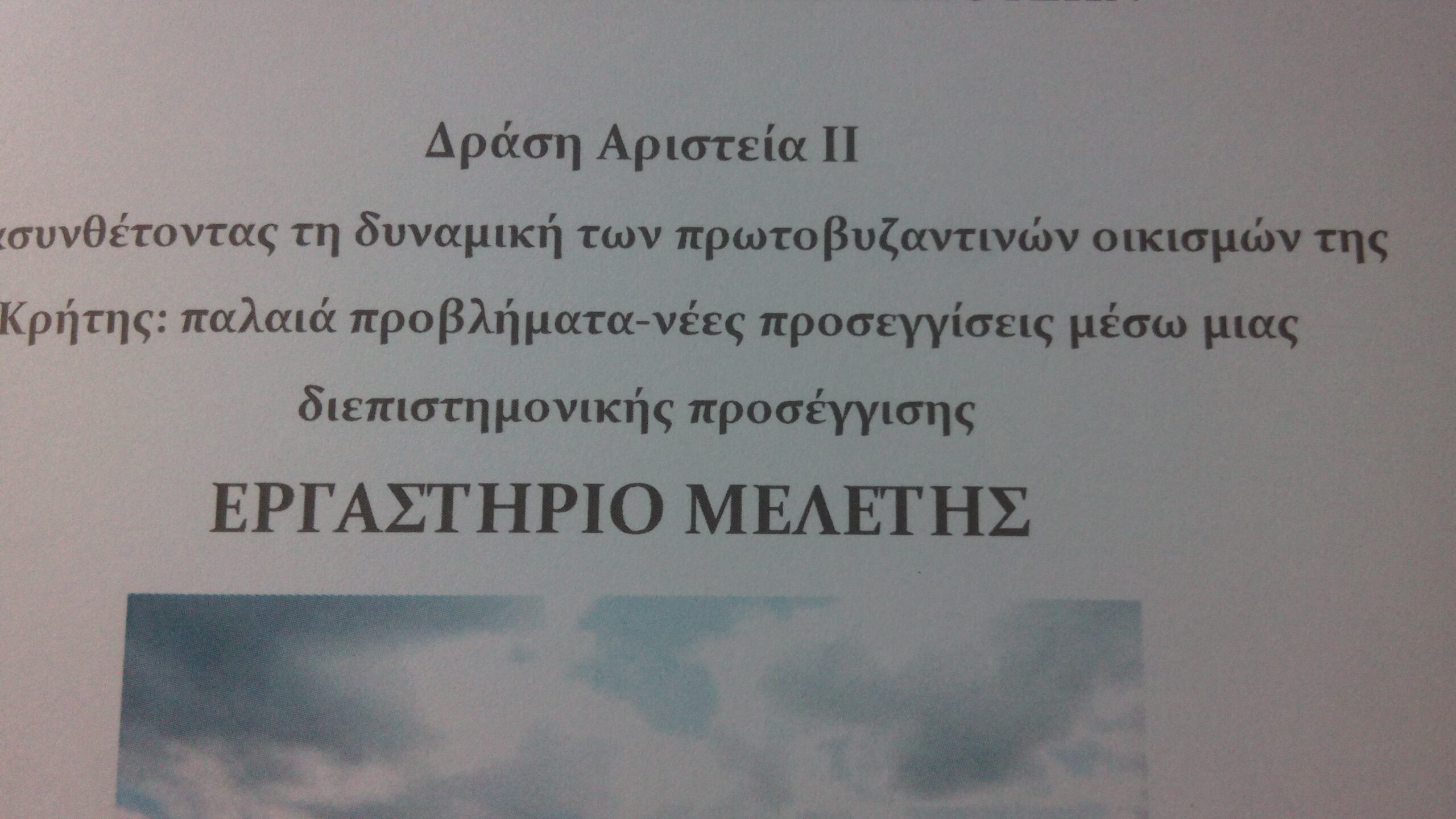On 16th July we’re out of the Mesara to join a study seminar about the Early Byzantine settlements of Crete, organised by the Institute of Mediterranean Studies (FORTH-IMS) in Rethymno as conclusion to the DynByzCrete research project led by Christina Tsigonaki and Apostolos Sarris. I was really happy to meet other colleagues I’ve met before in various parts of Europe: Kayt Armstrong, Anastasia Yangaki, Gianluca Cantoro. Yesterday I posted the summary of my talk, apart from the conclusions.
I had the privilege of being the last speaker, and taking advantage of the fact that Anastasia Yangaki had provided a detailed overview of ceramic consumption and production in Crete from the 4th to the 9th century, I could point to some specific issues in how we date archaeological contexts with pottery and most importanly in how we prioritise ceramic studies. Ceramic specialists are a rare species, and until now we have failed to provide the means for other archaeologists to quickly identify characteristic type finds of the Early Byzantine period, with sufficient detail to avoid very generic chronologies like “5th-7th” and “8th-9th”, that are highly problematic. We also have a responsibility for the fact that studies and publications of ceramic finds are always lagging behind fieldwork, because 1) there is little selection of significant, well-dated stratigraphic contexts 2) and the study and publication have been for too long done by separating ceramic productions that were looked at separately by hyper-specialists, rather than looking at contexts as our atomic unit. Therefore, it has been impossible to provide the quantified ceramic data that are needed for the type of analytical work that it envisaged by the DynByzCrete project – and we should admit that this data will be unavailable for a long time. As a thought experiment, we could stop doing fieldwork for 25 years and dedicate most of our efforts to the study of all significant ceramic contexts from recent rescue archaeology.
If we agree that there is a potential for extracting information about social dynamics from pottery, can we also agree that provenance studies based on standardised archaeometric procedures are only one of many ways that this can be done? We know very little of the actual manufacturing of most pottery types, of the material culture that permeates their making and usage. So, taking a broader view at the DynByzCrete project, while the environmental determinism behind some of the geospatial analysis needs to leave room for the complexity of Byzantine societies (plural), it is clear that we are at a turning point in the way we look at Early Byzantine Crete, and that’s because we are starting to consider the island in its entirety instead of focusing on a single settlement, no matter how large or important. In this respect, regional surveys don’t seem to provide a qualitative advantage over prolonged excavations – and their multi-period focus is an opportunity to deal with longue durée patterns but also a rather discomforting exercise in oversimplification of changes in historical periods. Pulling an amazing variety of data, that are mostly already available and published, stress-test the obvious and non-obvious patterns of interaction (travel time by horse/donkey among known episcopal cities? Social networks of elite members as known from lead seals and written sources and epigraphy and likely connections to luxury items?) is the best way to stop repeating the same dull research questions over and over.
How can we move forward? These are difficult times, for foreign research projects and especially for Greek institutions. It seems unlikely that we will be able to work more, with more resources, on this and other related topics of Cretan history. Thus, our first aim should be to make our research more sustainable (no matter how much the term is abused): publish on the Web, encourage horizontal and vertical exchange of skills and knowledge among institutions, focus on research outputs that are reusable and continuously upgraded (and perhaps kill interim reports).




